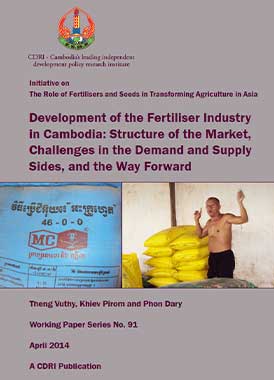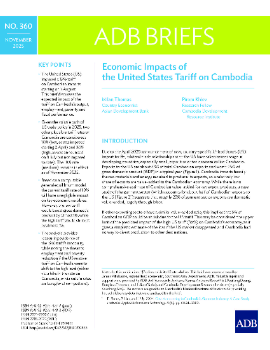
Development of the Fertiliser Industry in Cambodia: Structure of the Market, Challenges in the Demand and Supply Sides, and the Way Forward
Keyword: Agricultural productivity, fertiliser market, crop intensification, rural livelihoods, trade regulation
Abstract/Summary
This study examines the development of Cambodia’s fertiliser industry, focusing on market structure, demand and supply challenges, and policy directions. Fertiliser plays a vital role in agricultural intensification, contributing to increased crop yields, food security, and rural incomes. Despite rapid growth in fertiliser use, Cambodian farmers face significant constraints, including high prices, poor product quality, limited access to credit, and weak extension services. On the supply side, complex import licensing procedures, restrictive tonnage quotas, and fragmented regulatory oversight hinder market efficiency and competition. The study highlights discrepancies between official import data and actual consumption, suggesting substantial informal cross-border trade. It also reveals inefficiencies in nutrient use and the potential for improved productivity through site-specific nutrient management and balanced fertilisation. To address these issues, the authors recommend simplifying licensing procedures, removing import quotas, enhancing regulatory coordination, improving market information systems, and expanding public investment in agricultural research and extension services. Strengthening the fertiliser market is essential for sustaining agricultural growth, improving food security, and supporting Cambodia’s economic development.



